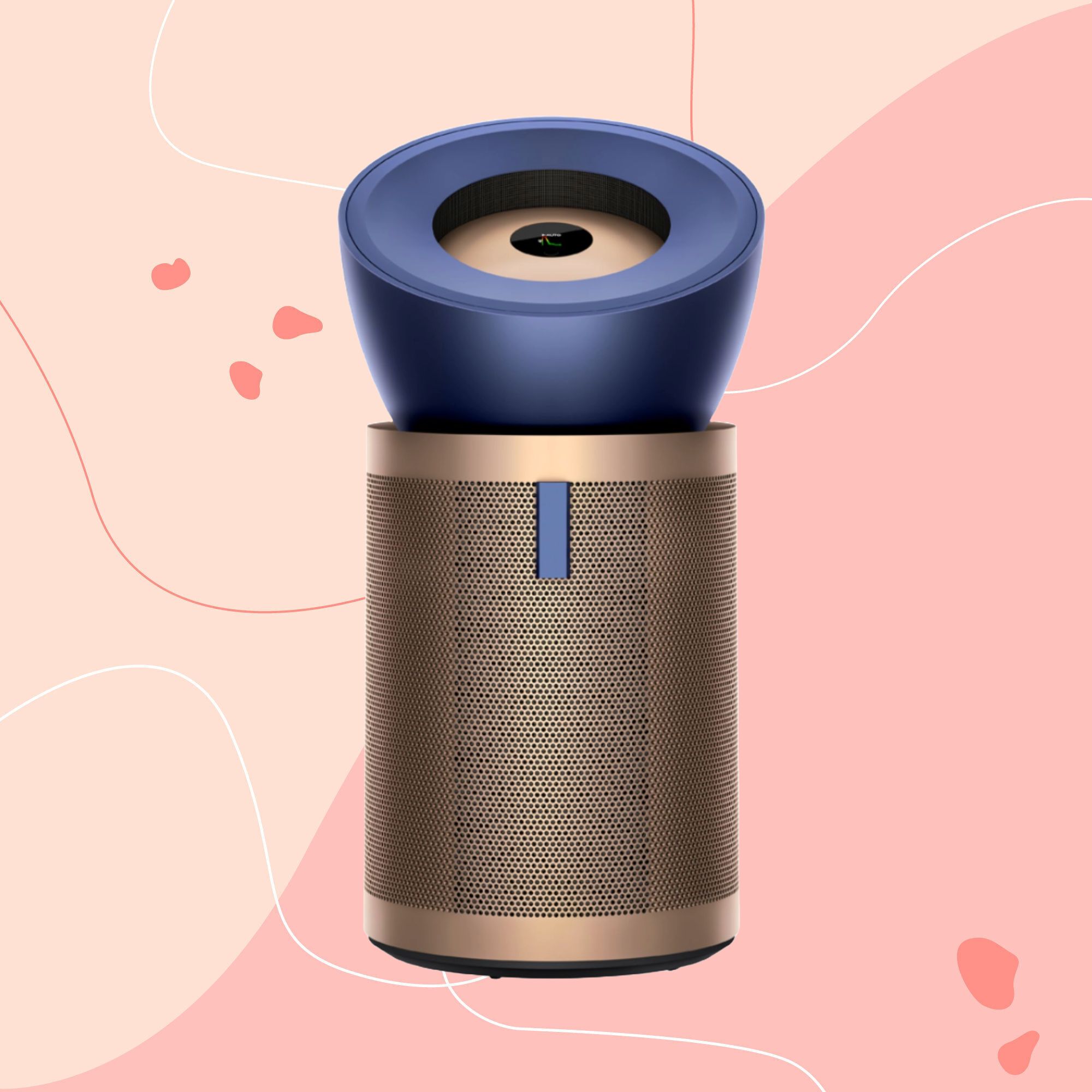
As Ideal Home’s resident air quality expert, I’ve made it my mission to know the ins and outs of the air purifier world. And while there are so many big brands staking their claim in this appliance corner, Dyson is generally considered the top dog. So, when I heard that the Dyson Purifier Big+Quiet Formaldehyde was the brand’s ‘quietest, most powerful air purifier,’ I knew I had to test it out.
Over the course of three weeks, I put the Dyson Purifier Big+Quiet Formaldehyde through its paces to see whether it has what it takes to compete with the best air purifiers available. My verdict? It’s quiet by name and quiet by nature - and while it might be pricey, I think it’s worth every penny if you really value whole-home purifying.
In a nutshell
On paper, the Dyson Purifier Big + Quiet Formaldehyde Purifying fan offers a wide range of impressive, science-led features - like the fact that it captures 99.9% of particles, can purify large spaces up to 100m², captures the urban pollutant NO², uses cone aerodynamics to circulate air and drive the pollutants back through the three-stage filtration, and is 50% quieter than any other Dyson air purifier.
But I know that, to some people, that’s all a bit overwhelming. What you really want to know is whether it works… and how well it will fit into your house. And after being initially doubtful that something so large and expensive would be able to find a home in my house, I’ve eaten my hat. This air purifier fan is quiet, powerful, stylish, and one of the most impressive air purifiers I’ve ever tested.
The ability to purify large rooms is this air purifier’s USP, as its 100m² range means it has the power to purify entire homes (after all, the average semi-detached home measures around 90-95m²) or open-plan spaces, offices, classrooms, or shops. And throughout testing, I really did feel as though my home’s air quality improved massively.
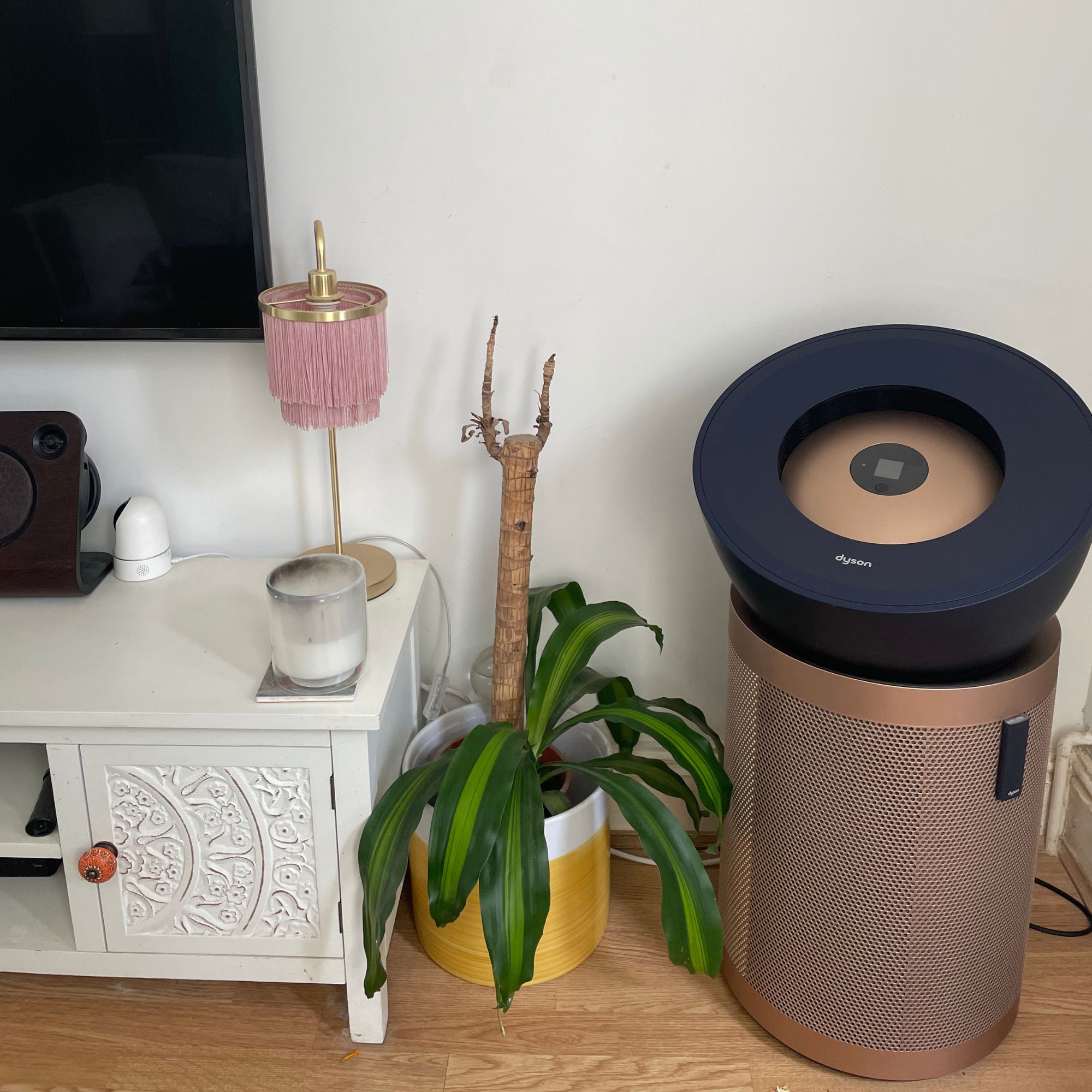
An app or a remote control easily controls everything you need from the Big+Quiet, it’s incredibly customisable to your home and routine, a whole wealth of air quality information is at your fingertips (and phone), and you don’t have to worry about replacing the (very high-tech) filters every six months.
My only niggles were that the reaction times were a little slower than I expected, and there’s no denying the fact that this air purifier is big. However, aside from that, I really do think it’s a worthy investment for those looking for whole-home purifying.
N.B.: It’s worth noting that I tested the Dyson Purifier Big+Quiet Formaldehyde BP04, which is exclusive to the Dyson website. However, the BP04 is almost identical to the BP03, which is more widely available and also a bit cheaper. The only differences are the colourway and the fact that the BP04 also comes with a CO2 sensor and an improved activated charcoal filter. Aside from that, the specs are virtually the same.
Specifications
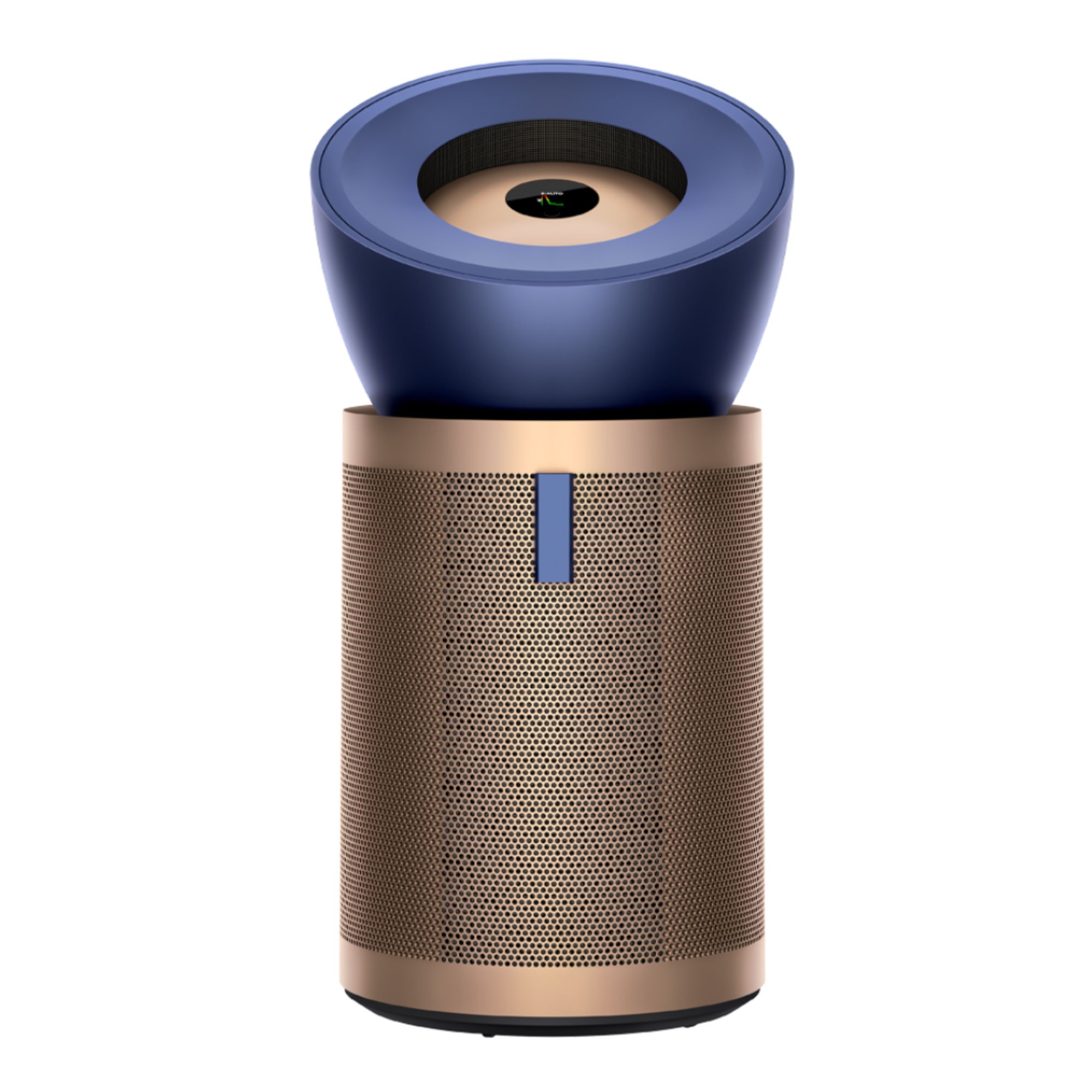
- Recommended room size: Large spaces up to 100m²
- CADR: Not supplied
- Noise levels: 37dB-57dB (tested by us)
- Filter type: HEPA H13-grade, Activated carbon and Selective Catalytic Oxidisation filters.
- Dimensions: H83cm x W41.5 cm x L43.4 cm
- Weight: 11.9 kg
- Smart App connectivity: Yes
- Timer: Yes
- Auto mode: Yes
How I tested
Unboxing and setting up
From the name alone, I had expected the Dyson Purifier Big+Quiet to be big, but I didn’t expect the box it came in to be such a beast. In fact, even the delivery driver commented on the mammoth size of the box and struggled to get it up the front steps to my house. I then struggled to heave it into my dining room by myself, so it’s worth taking that into account if you have mobility issues or don’t have someone on hand to help.
I was a little disappointed to see that the box was also encased in plastic, as I didn’t think this was necessary (or eco-friendly). However, for a product of this price, I do understand the extra layer of protection. I just wish there had been more information on the plastic to tell me whether it was recyclable or not.
However, I was greeted with a lot more eco-friendliness when I opened the box. Aside from plastic encasing the air purifier itself, everything else was protected in cardboard shells, and I was also relieved to see that there weren’t too many pieces to assemble. I didn’t even have to unwrap or assemble any of the filters, as these were already in place within the machine itself.
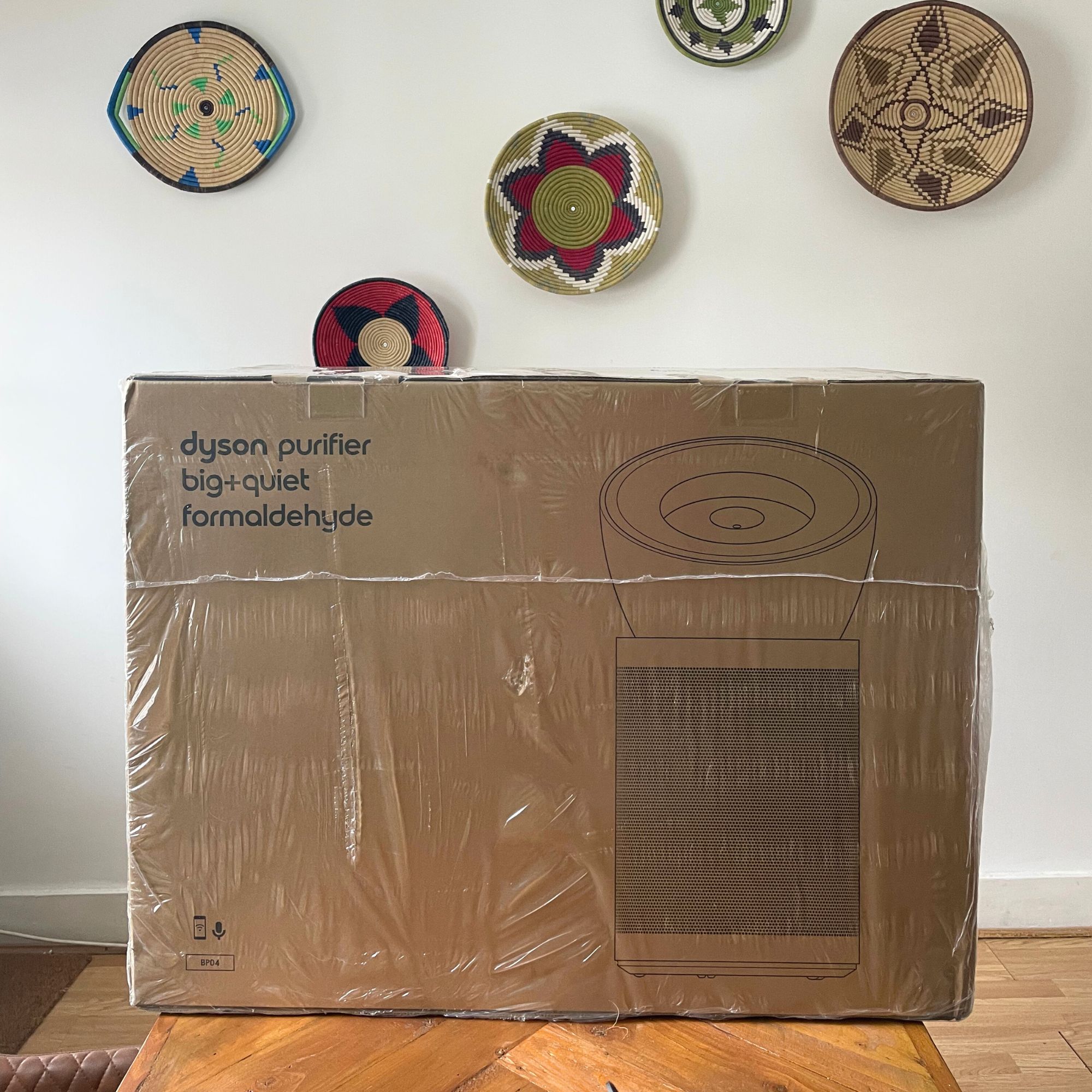
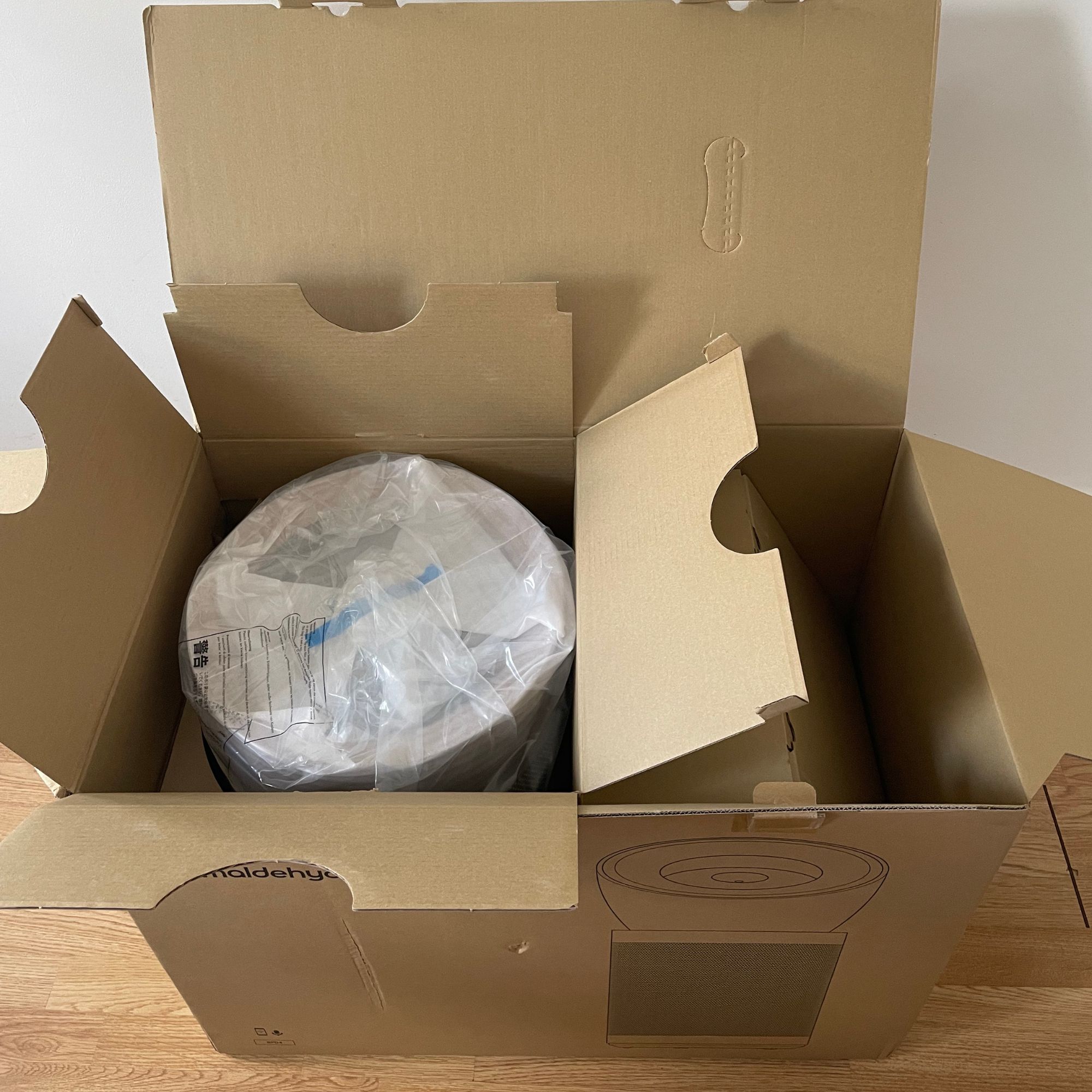
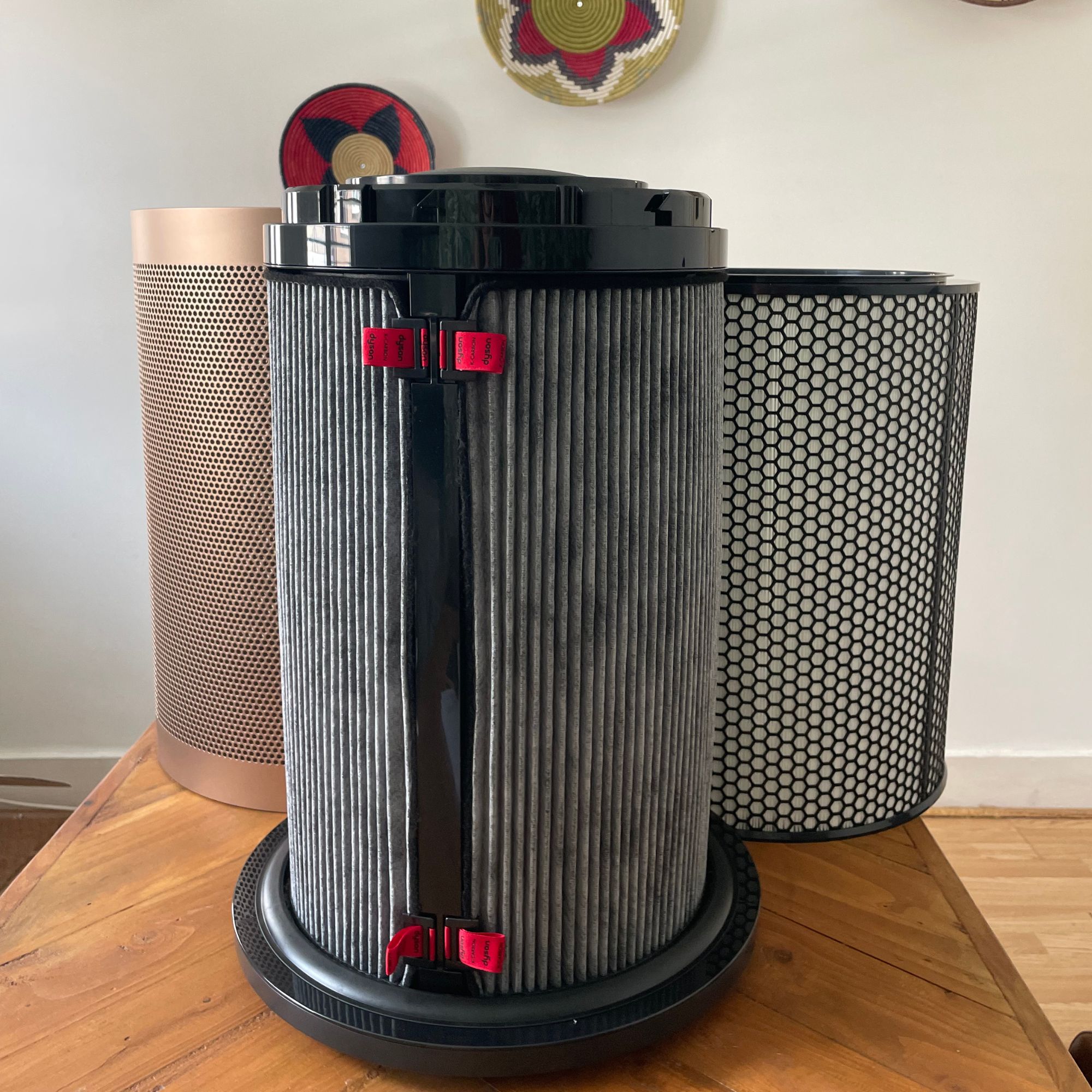
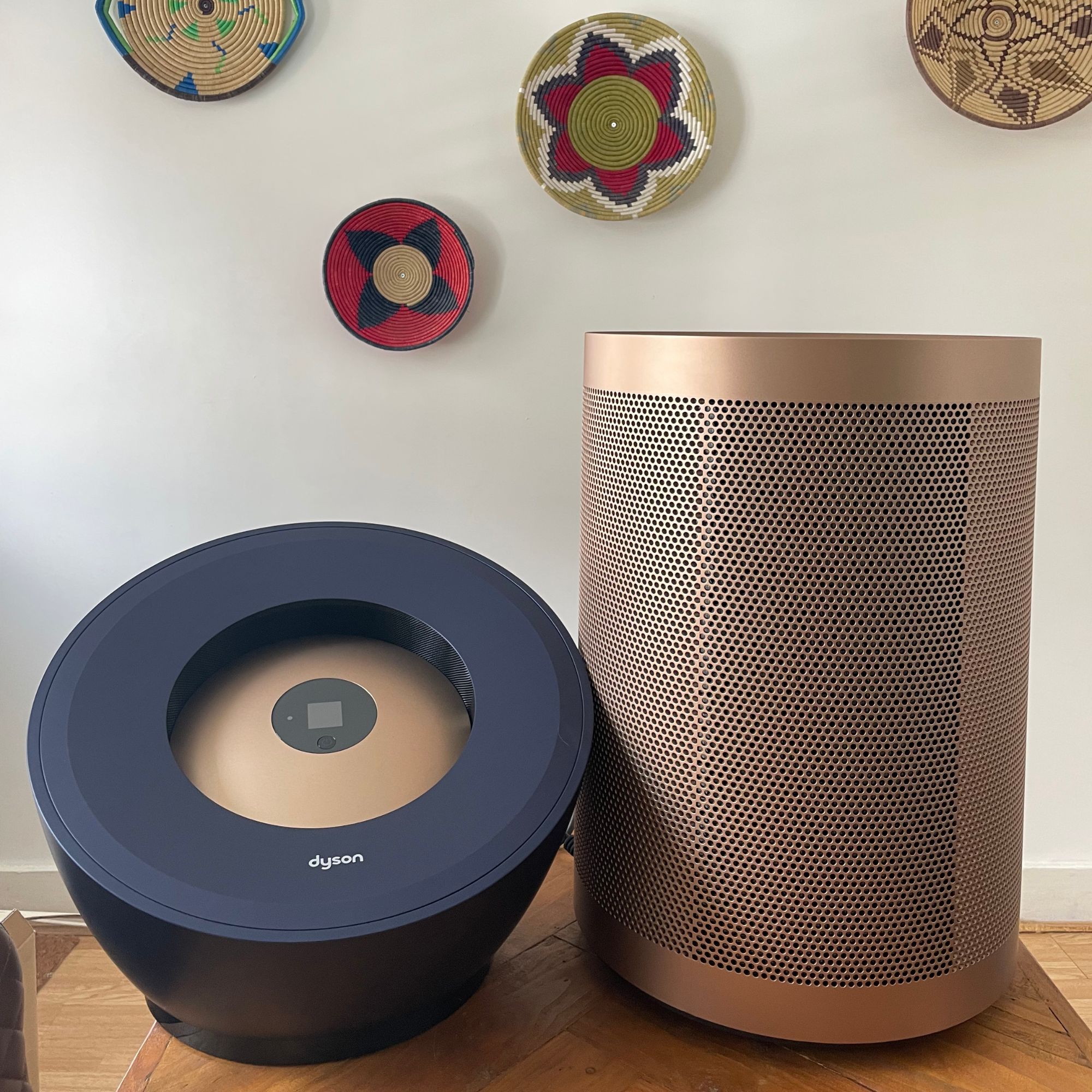
I did want to take a sneak peek at the filters, though. So, I pressed the red buttons on the inside of the gold casing and lifted it up. This was almost like a set of Russian dolls, as you have to lift the first HEPA filter up to get to the K-carbon filter, and it was extremely efficient.
Then, I attached the cone head to the main unit, attached the remote control to the magnetic strip (a feature I REALLY like as I’m notorious for losing small remote controls), and then grabbed my phone to connect it to the MyDyson app for real-time data and extra controls.
This was easy enough, and all I needed to do was download the app, scan the serial number of the model, turn the air purifier on, hold my phone near it, and then press the button on the actual appliance. The app then asked me to indicate the location of the air purifier, and as I’d set it up in my living room, I selected that option before sitting back and letting it do its thing for a while.
Design
Air purifiers are a bit like Marmite - you either love the look of them or you hate them. And while some air purifiers are simply white, unassuming, and blend into the background, it’s fair to say that the Dyson Big+Quiet Formaldehyde can’t and won’t ever do that.
Not only is it big, but it’s also an unusual shape and pretty bold in terms of its colourway - no matter whether you opt for the ‘Prussian Blue and Gold’ of the BP04 like me or the ‘Nickel and Prussian Blue’ of the BP03.
In fact, the design is unmistakably Dyson. And as a Dyson fan, I don’t mind it, but I can see how both the size and design could be a turn-off for some, as there’s just no hiding it.
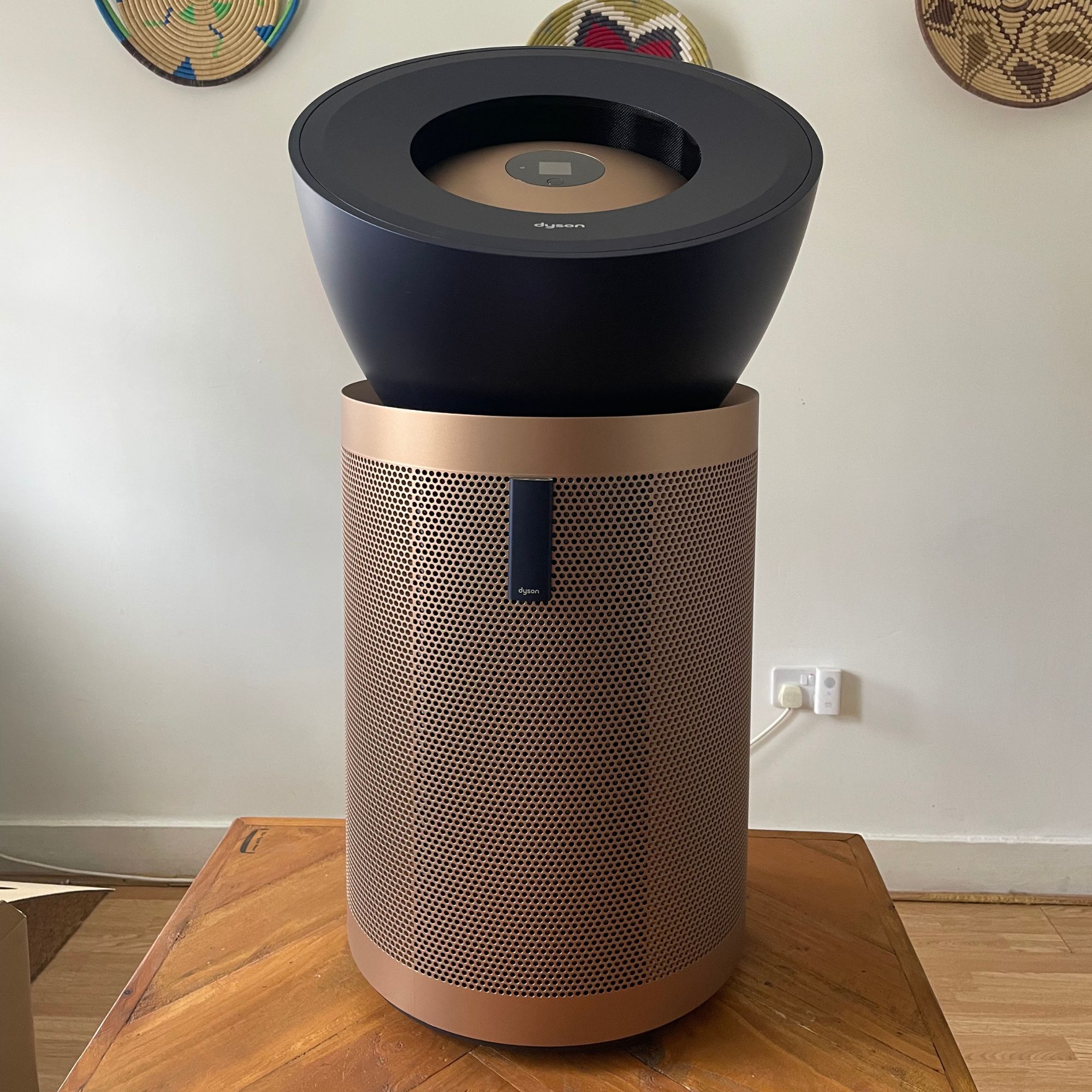
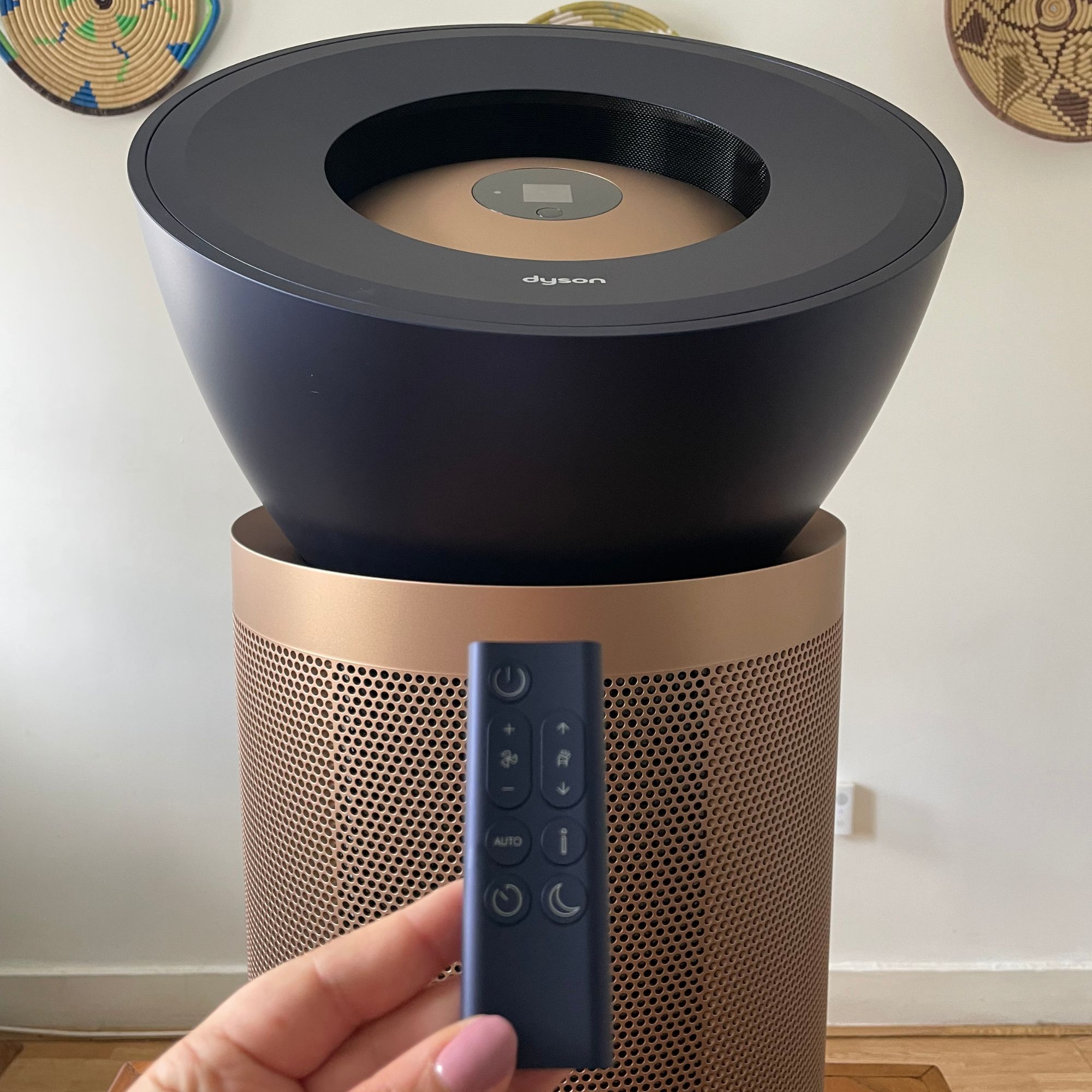
However, there are some things that I do think could sway those sitting on the fence. The LCD screen on what I’m dubbing the head cone is extremely small and therefore won’t be distracting, there’s the magnetic strip on the gold outer casing to keep your remote control safe, and there’s even invisible castor wheels on the bottom of the appliance so you can easily move it around the house.
So, whether you like it or not, there’s no denying that a lot of thought has gone into the overall design of this appliance to make it unique.
Ease of use
Although I test all manner of appliances as part of my job, I’ll be the first to admit that I don’t like complicated controls, and I immediately mark something down if it takes me more than a minute to understand how I’m supposed to use it. Thankfully, this wasn’t the case with the Dyson Big+Quiet.
In fact, one of the things I loved most about it was just how easy it was to use. This is largely because there are two ways to control the settings of this appliance: through the remote control or the app. Admittedly, you can’t do as much with the remote control, but you can turn it on and off, adjust the fan speed, check the air quality stats, and even angle the fan at the push of a button.
I’m more of an app person, anyway, so this limited functionality didn’t bother me. Instead, I used the Dyson app to control and monitor everything. And when I mean everything, I really do mean everything. Through the app, you can easily set timers, connect to voice assistants like Alexa and Google Home (something I don’t have but imagine will be very useful if you do), and adjust all of your fan and speed settings.
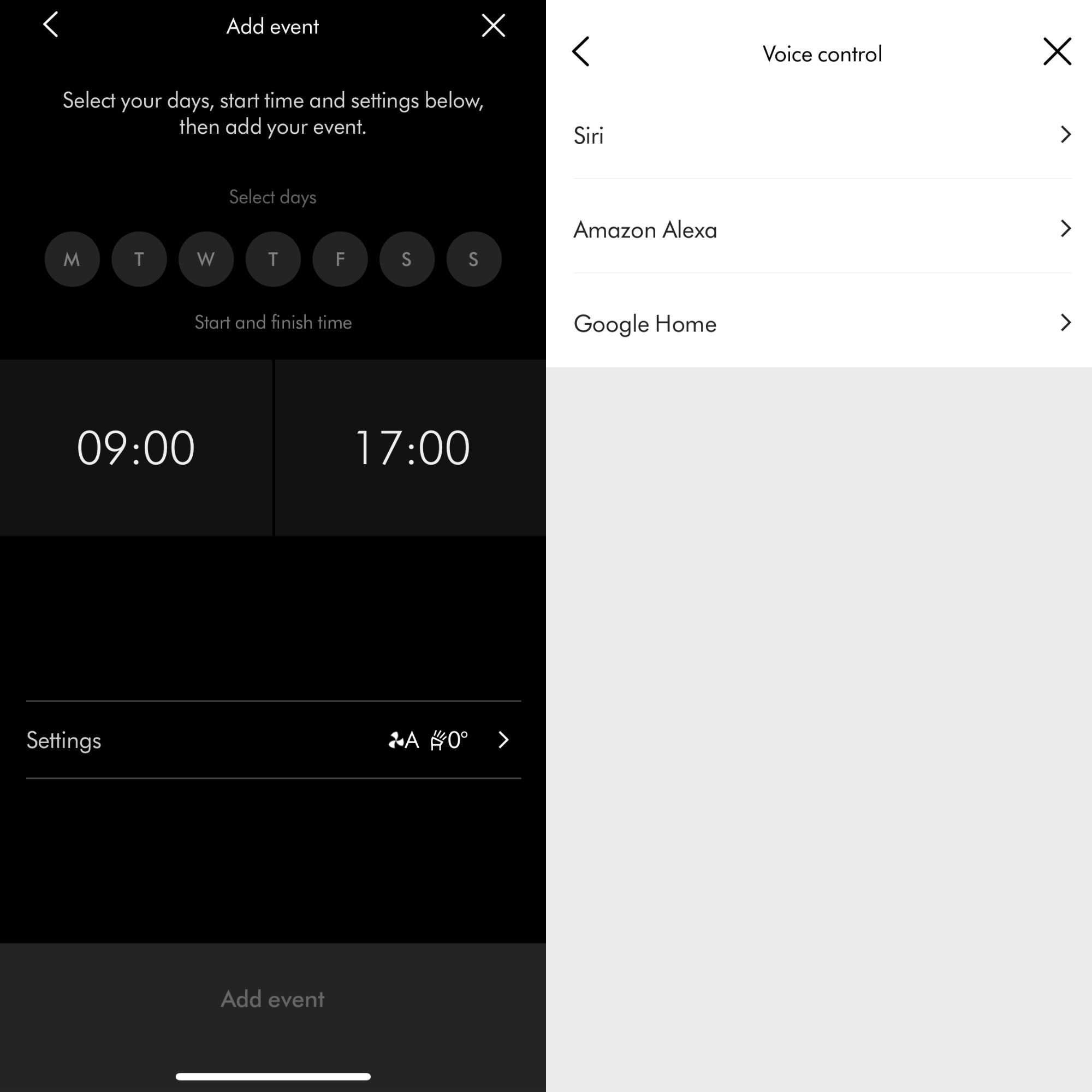
Of course, this is also where you can check all of your air quality data, which is extremely detailed and admittedly a little overwhelming at first. And while I’ve tested and used many air purifiers in the past, the Dyson Big+Quiet reveals more pollutants than I've ever experienced.
On the less intense side, the air purifier monitors temperature and humidity - something I didn’t necessarily pay much heed to during the summer months, but is something I’d probably appreciate more in the winter when I want to keep the condensation in my Victorian house at bay.
On the more intense side of things, the Big+Quiet also monitors the following:
- Particulate matter PM2.5 (microscopic particles smaller than 2.5 microns, like smoke)
- Particulate matter PM10 (microscopic particles smaller than 10 microns, such as pollen and other allergens)
- Formaldehyde HCHO (a colourless, flammable gas that is often found in furniture and paint)
- Volatile organic compounds VOCs (harmful gases caused by cooking and found in cleaning products)
- Nitrogen dioxide and oxidising gases NO² (harmful gases released by combustion and cooking)
- Carbon dioxide CO² (often affected by how well a room is ventilated - but this is only available in the BP04, not the BP03 model)
On the app, each of these potential harmful pollutants is measured individually and has its own graph that you can monitor, but you can also look at your ‘overall’ air quality too, which encompasses all of them.
Personally, I really appreciated being able to see how my air quality fluctuated throughout the day and watching as the air purifier eventually reduced all the allergens to safe levels. But if numbers and graphs aren’t quite your vibe, you can also just look at the colour of the screen on the app.
Green indicates a ‘good’ air quality, light orange is ‘fair,’ and then it continues down to darker orange, light red, darker red, and finally purple for ‘severe.’ Thankfully, I only reached ‘very poor’ during my testing process, which coincided with the height of a sanding and painting session in my house. I can only imagine what kind of home you’d need to live in to go all the way down to purple.
Performance
Any air purifier can look nice and have easy-to-use controls, but the most essential feature of any air purifier is actually to clean the air in your home. To test this, I wanted to put the Dyson Big+Quiet through our specific testing process.
I ensured that my air quality was ‘good’ and then switched it to ‘Auto’ mode. Then, I began with the match test, which involved lighting a match near the air purifier and letting it blow out to observe its reaction. Amazingly, it didn’t take long (around 20 seconds) for the Big+Quiet to notice a change in the air quality, and I could see the CO² and PM2.5 levels rising quite quickly.
It took about five minutes for these levels to reach their peak before they started to reduce as the air purifier worked its magic gradually. And all in all, it took around 15 minutes before my levels had dropped back to where they had been previously.
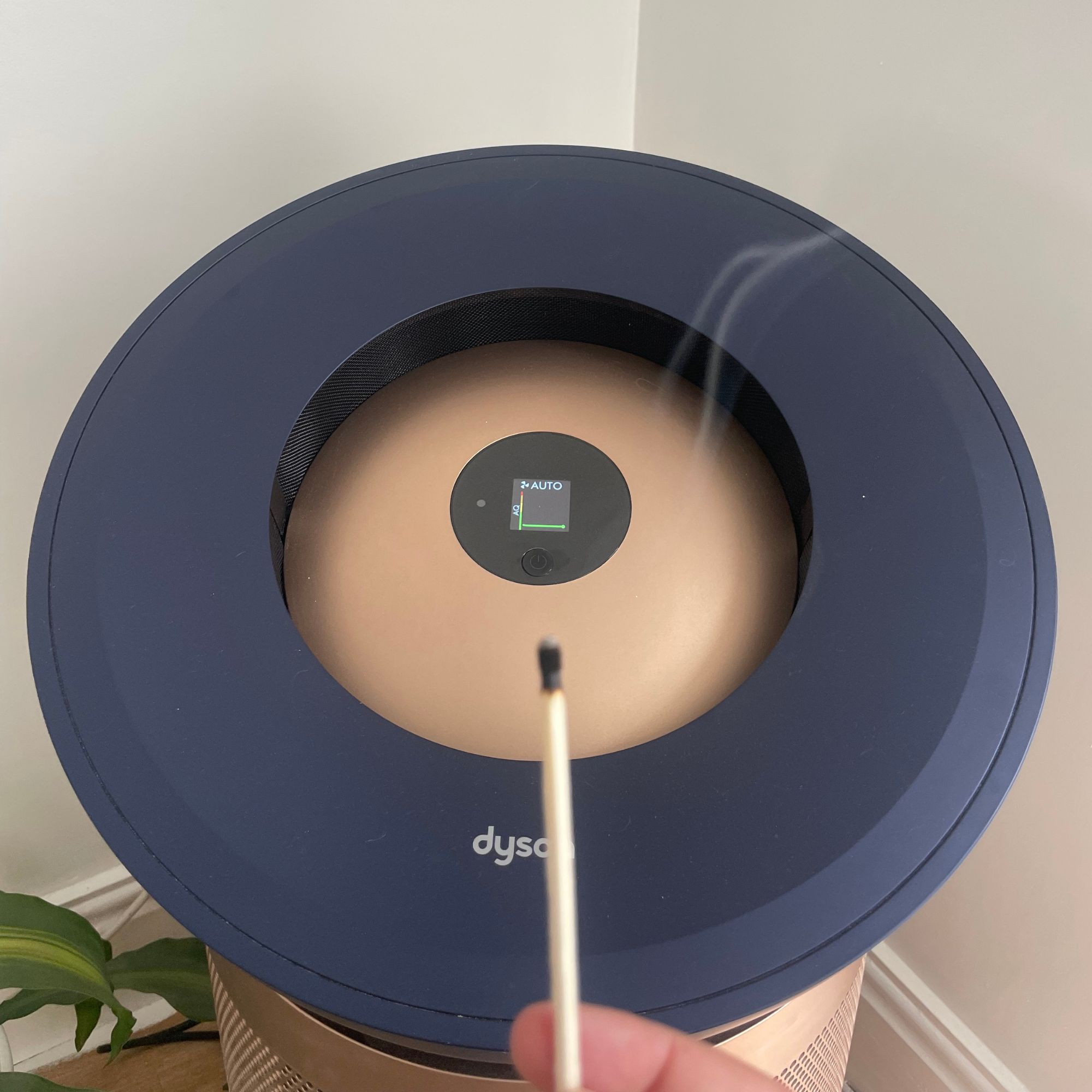
Next, I moved on to the deodorant test, which tests an air purifier on its ability to remove VOCs from the air. This time, it took around two minutes for the Big+Quiet to react to the introduction of this harmful aerosol, and I was also surprised to see that both the VOC and the formaldehyde levels increased with the deodorant.
This had me frantically Googling why that would be the case, and it turns out that many spray deodorants also contain formaldehyde as a preservation measure. So, I’ve actually switched to a natural roll-on deodorant since then, as we should all try to avoid formaldehyde exposure at all costs. Thankfully, the VOCs and formaldehyde levels didn’t increase as drastically with the deodorant test, and my air quality returned to normal levels within 7 minutes.
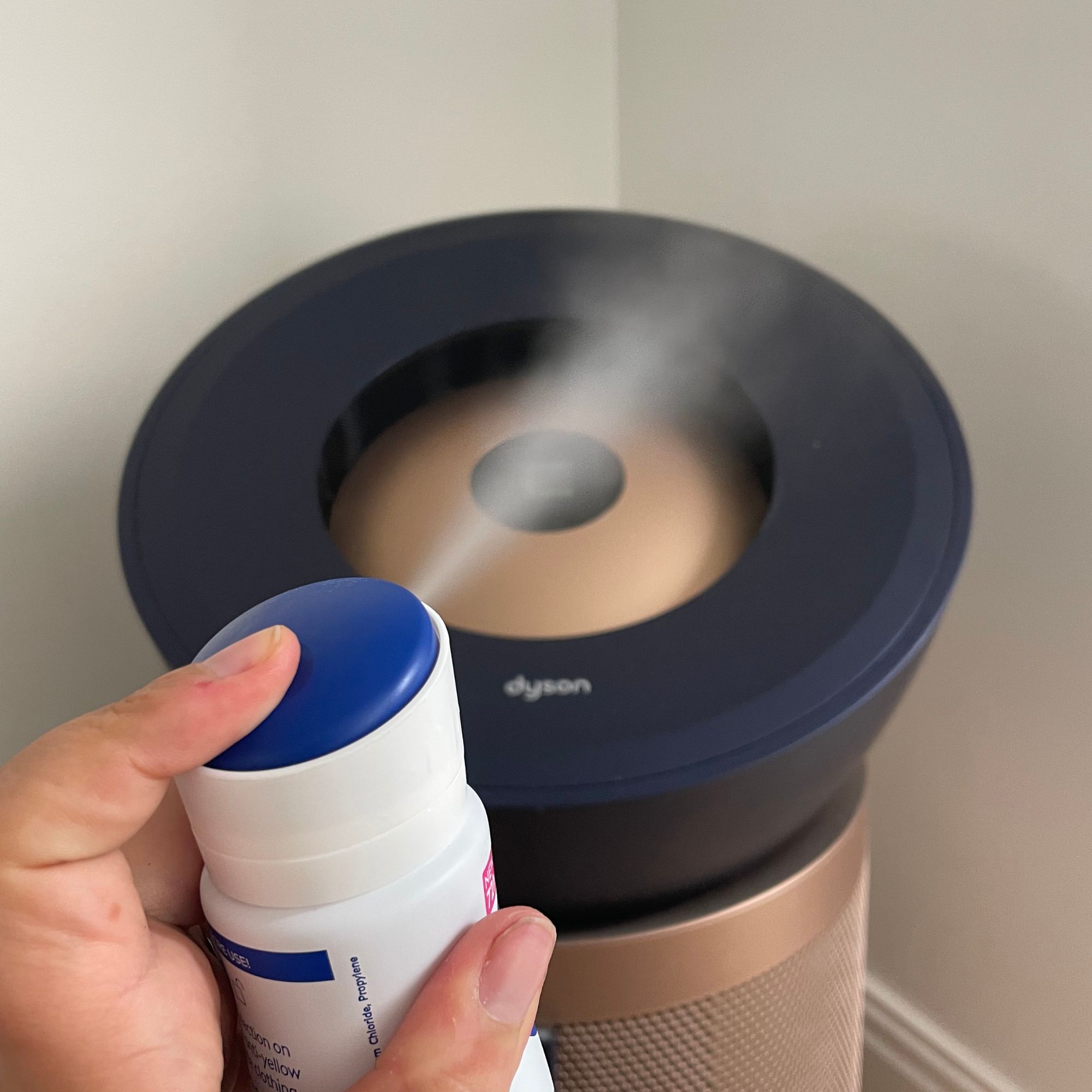
After the deodorant test, I moved on to the (vegetarian) bacon test. I assumed that my gas hob coupled with the cooking fumes would cause a big reaction from the Big+Quiet, and I wasn’t wrong. Just 30 seconds after the bacon started sizzling, my air quality worsened, and the ‘Auto’ mode turned itself up a notch to deal with the changes.
Then, it took around 20 minutes for my levels to return to normal after I’d finished making my bacon sandwich, and I couldn’t even smell any lingering bacon odours after that time, either.
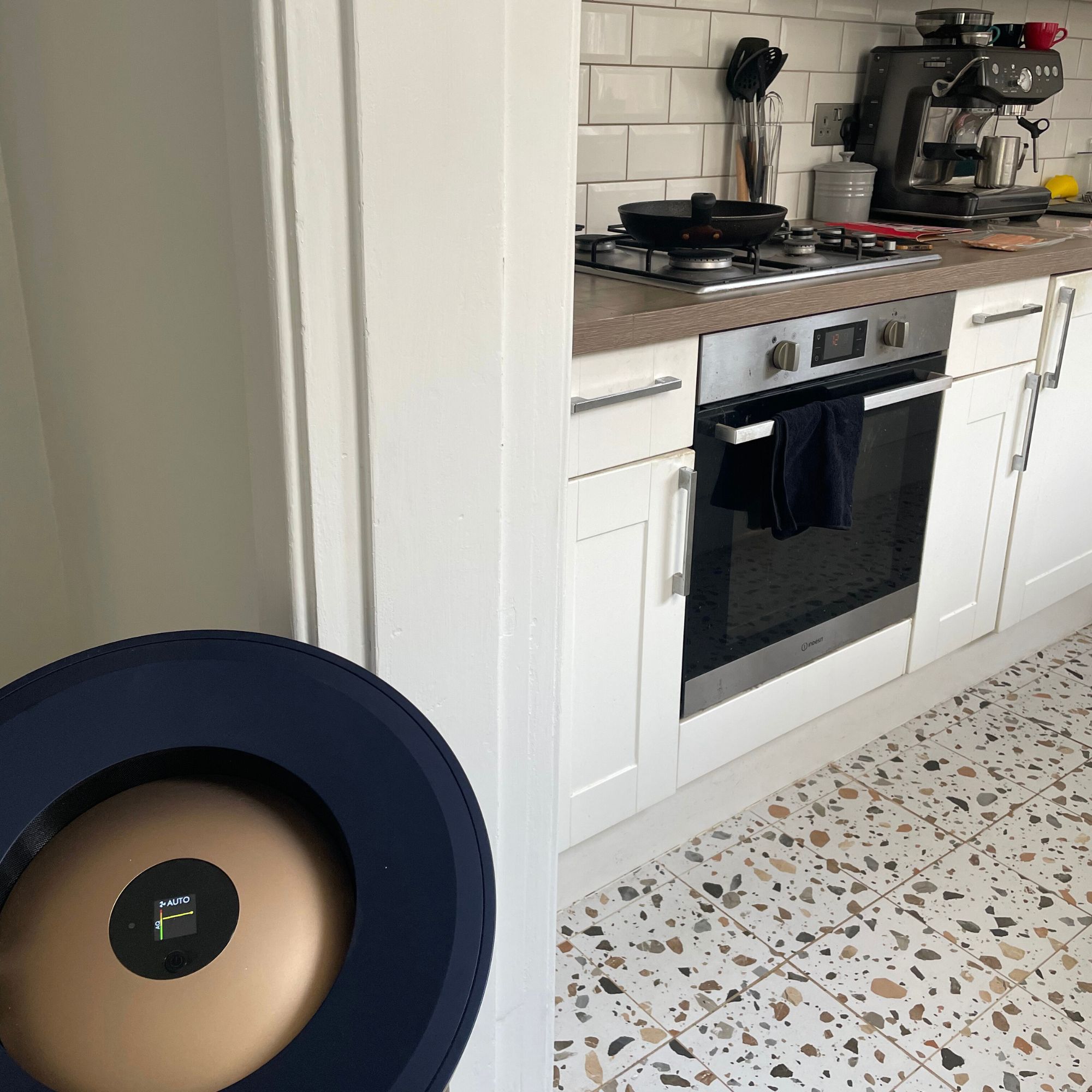
Finally, I moved on to the dust test. For this one, I emptied the contents of my vacuum cleaner in front of the air purifier and waited to see how it would react. All in all, it took around three minutes for it to notice a slight change, and within another five minutes it was back to normal - so, it didn’t make too much of a dent in my already-very-good air quality.
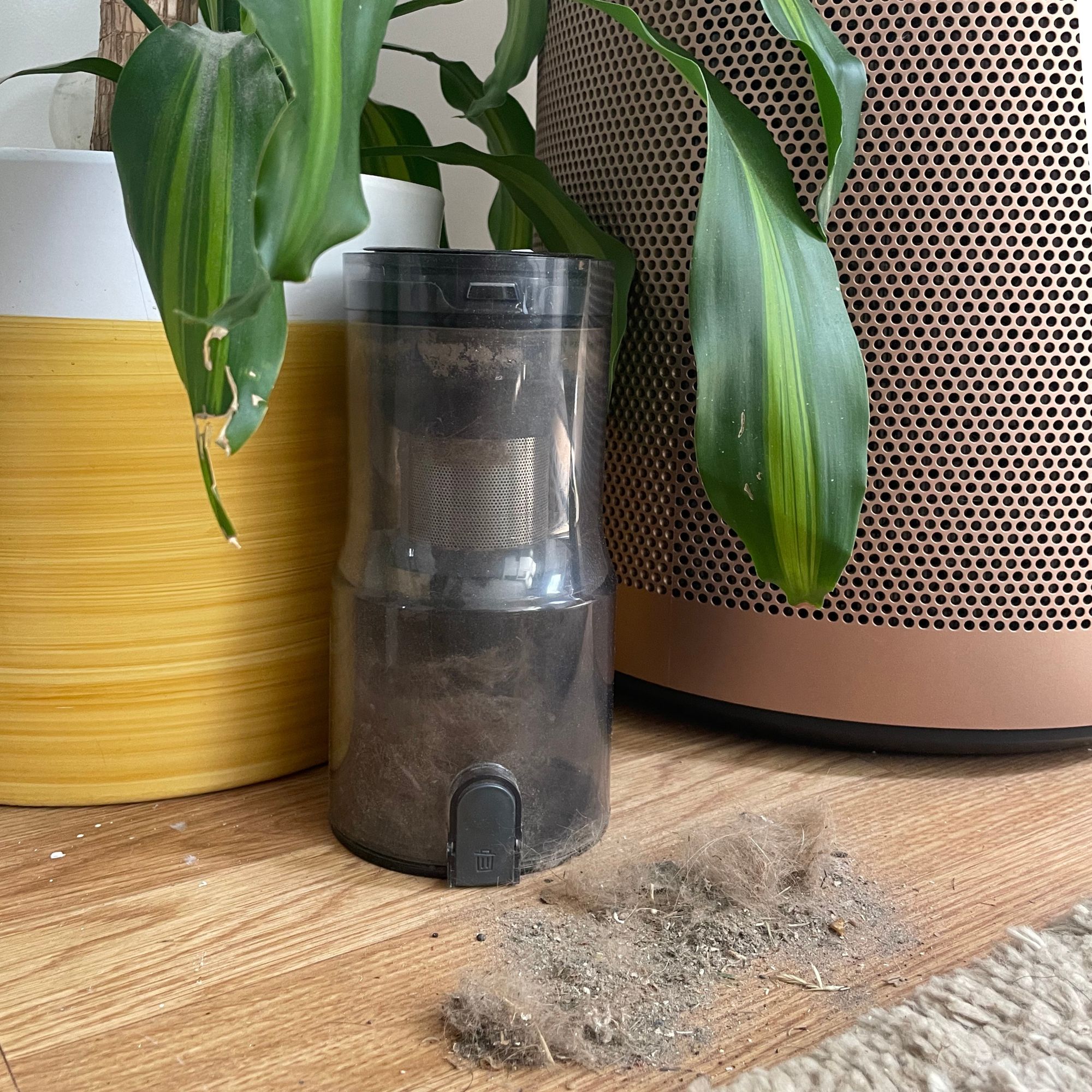
As my air purifier testing process also coincided with myself and my husband sanding and re-painting the skirting boards in our house in preparation for some new flooring, I also got to unofficially ‘test’ the Big+Quiet during many DIY sessions - and it’s safe to say that the whole thing made me feel a bit sick.
My graph would constantly enter the dark red levels on the graph while sanding and painting (after all, I was introducing both dust particles and VOCs into the house), and it really put the air purifier through its paces. But the Big+Quiet had no problems bringing everything back down into the safe zone when we’d finished. This impressed (and horrified) me immensely, as I could really see how hard it was working to keep my home healthy.
And while I will say that the reaction times of this air purifier are quite a bit slower than many other air purifiers the Ideal Home team has tested, I don’t exactly see this as a negative. Sure, having to wait a little longer isn’t ideal, but I felt extremely confident in the air purifier’s ability to do its job to the highest calibre - and it actually made me question how cheaper, less powerful air purifiers are able to do the same thing in a shorter amount of time.
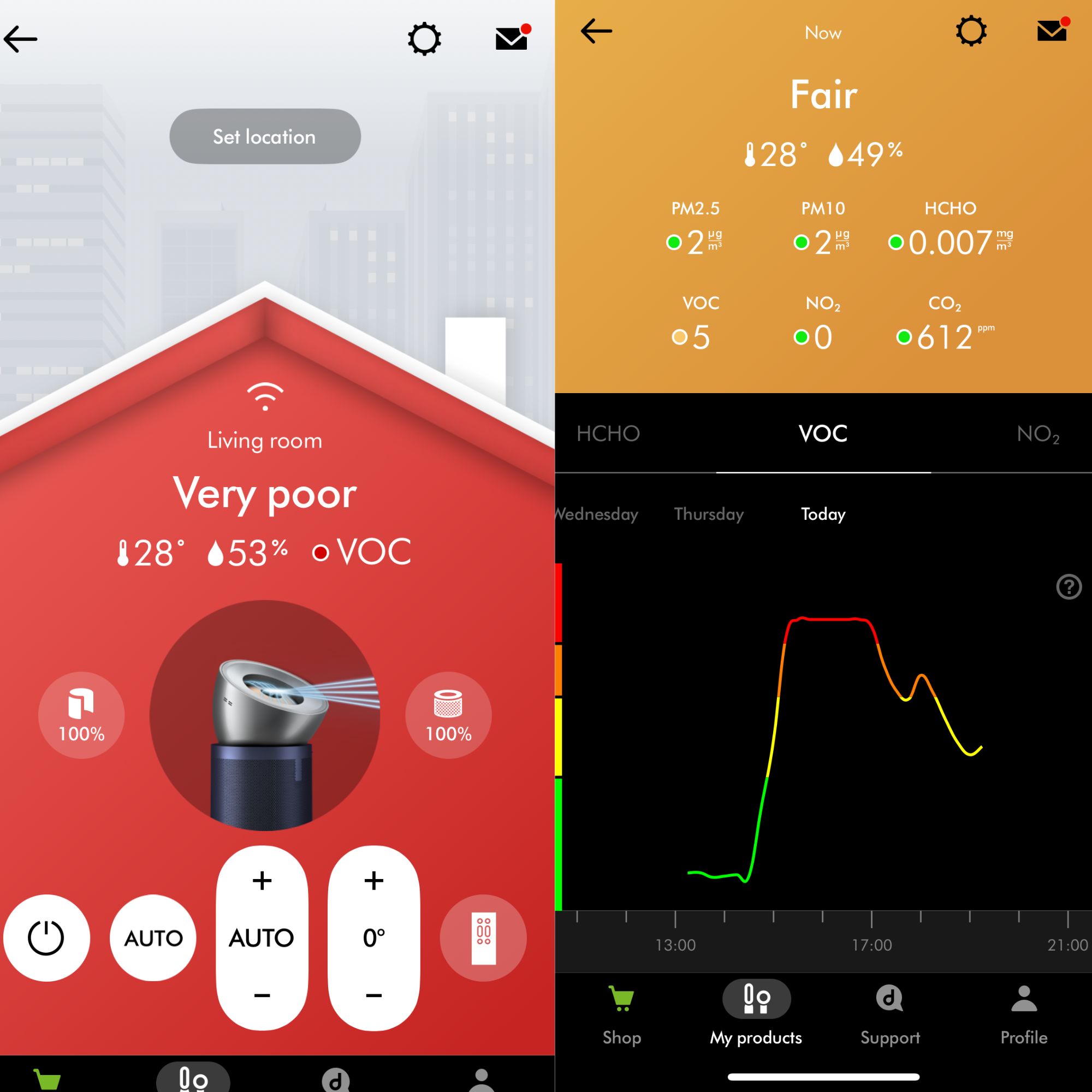
This also isn’t a new thing, as Dyson air purifiers are known for being a little slower to react than the masses. Our reviewer also found this with the Dyson Hot+Cool Formaldehyde Air Purifier, which continues to be one of the brand’s bestselling and top-rated products. So, slower doesn’t necessarily mean worse.
It’s also worth mentioning that the Dyson Big+Quiet is technically a fan, too, as the delivery of up to 80 litres of purified air per second creates a cooling effect. On a recent visit to Dyson HQ in Malmesbury - yes, I do have the coolest job ever - I had the opportunity to speak with the air purifier engineers, who explained that it’s this air circulation that makes the air purifier so effective. After all, many air purifiers claim to purify the air, but successful purification relies on air circulation, too, which is why this particular model is so powerful.
And as I tested the Big+Quiet during a June heatwave, I found myself using it in place of a fan and angling the air in a way that cooled both myself and the room, so this was a great feature. I do wonder how much I’ll appreciate this in the winter, though.
Noise levels
Marketed as Dyson’s ‘quietest air purifier,’ I expected the Big+Quiet to be on the quiet side - but what I didn’t expect was for it to be almost silent.
On paper, the brand says it provides 56 decibels of noise (dB), which is about the same as a quiet conversation. But what I’d like to clarify through my own testing is that I picked up a reading of 57dB on the HIGHEST speed setting. On its quietest setting, I measured a reading of just 37dB, which is comparable to a whisper.
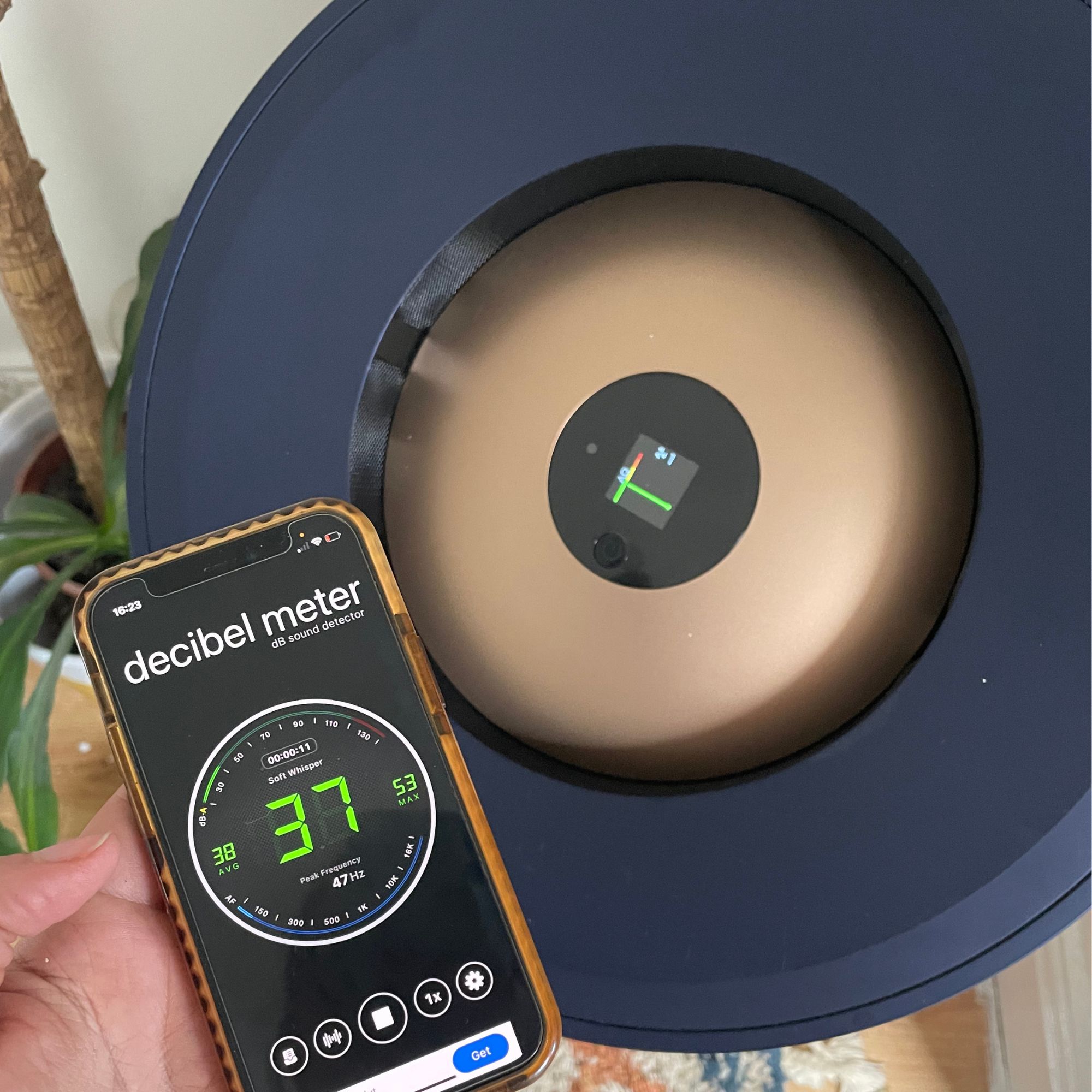
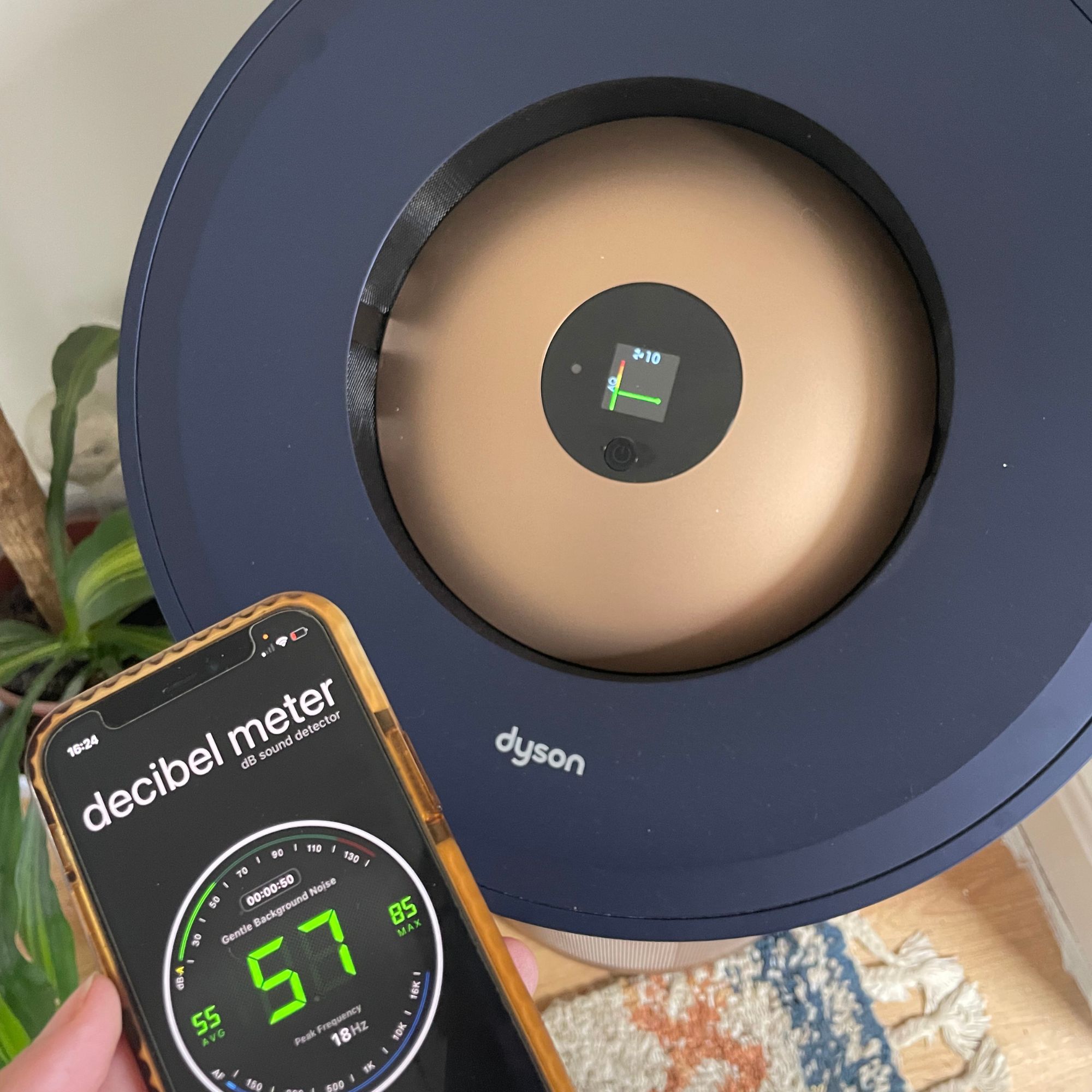
And while this doesn’t make it the quietest air purifier the Ideal Home team has ever tested - that honour goes to the Blueair Blue Max 3250i Air Purifier - it’s still one of the quietest. This impressed me immensely, especially as it’s also extremely powerful, which normally translates to a loud machine.
In fact, sometimes I'd check that Big+Quiet was still on, as it was so quiet I wondered whether I’d accidentally turned it off. It really is that quiet.
Portability
One thing I was worried about when I initially saw the Big+Quiet was how I’d be able to carry it from room to room. However, the reality is that I didn’t need to move it during testing, thanks to its 100 m² coverage. This meant that, even if I kept it in my living room, my entire home was being purified.
That said, Dyson has still thought about portability. The unit itself isn’t heavy (just a little awkward in size), and it comes with discreet wheels which aren’t visible when the appliance is upright. So, you can just push it around the house if you have hard floors. If you have carpet, it’ll be a little trickier, but not impossible.
Filter replacement
Although there are so many positives to air purifiers, replacing the filters regularly is a definite negative. That’s why I was happy to learn that I wouldn’t need to replace the filters of the Dyson Big+Quiet regularly. Additionally, the machine will notify me when the HEPA, Activated carbon, and Selective Catalytic Oxidation filters need to be changed.
In the three weeks that I’ve spent testing this air purifier, I can see that I’ve only used 1% of the carbon filter's life - and I still have 100% left in my HEPA.
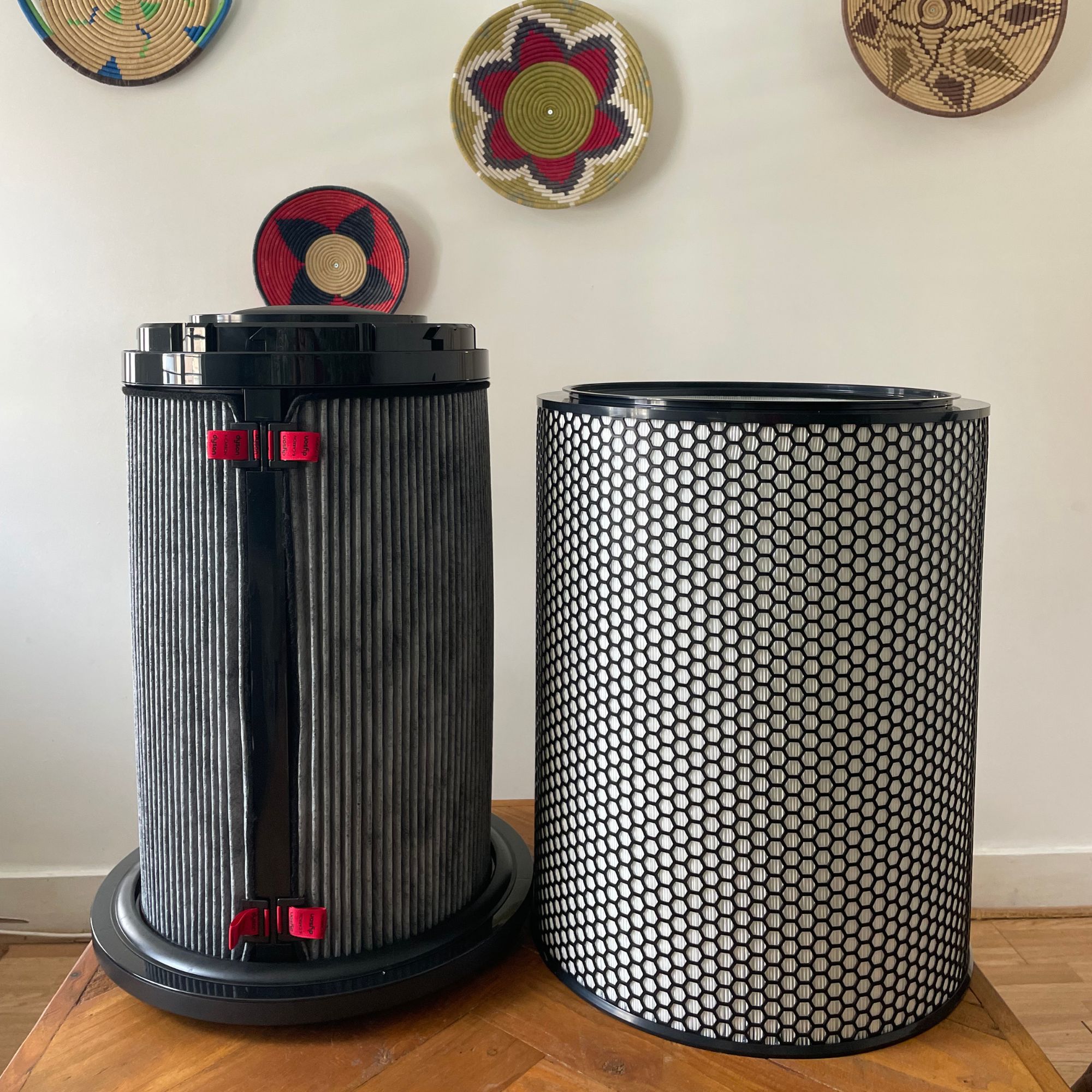
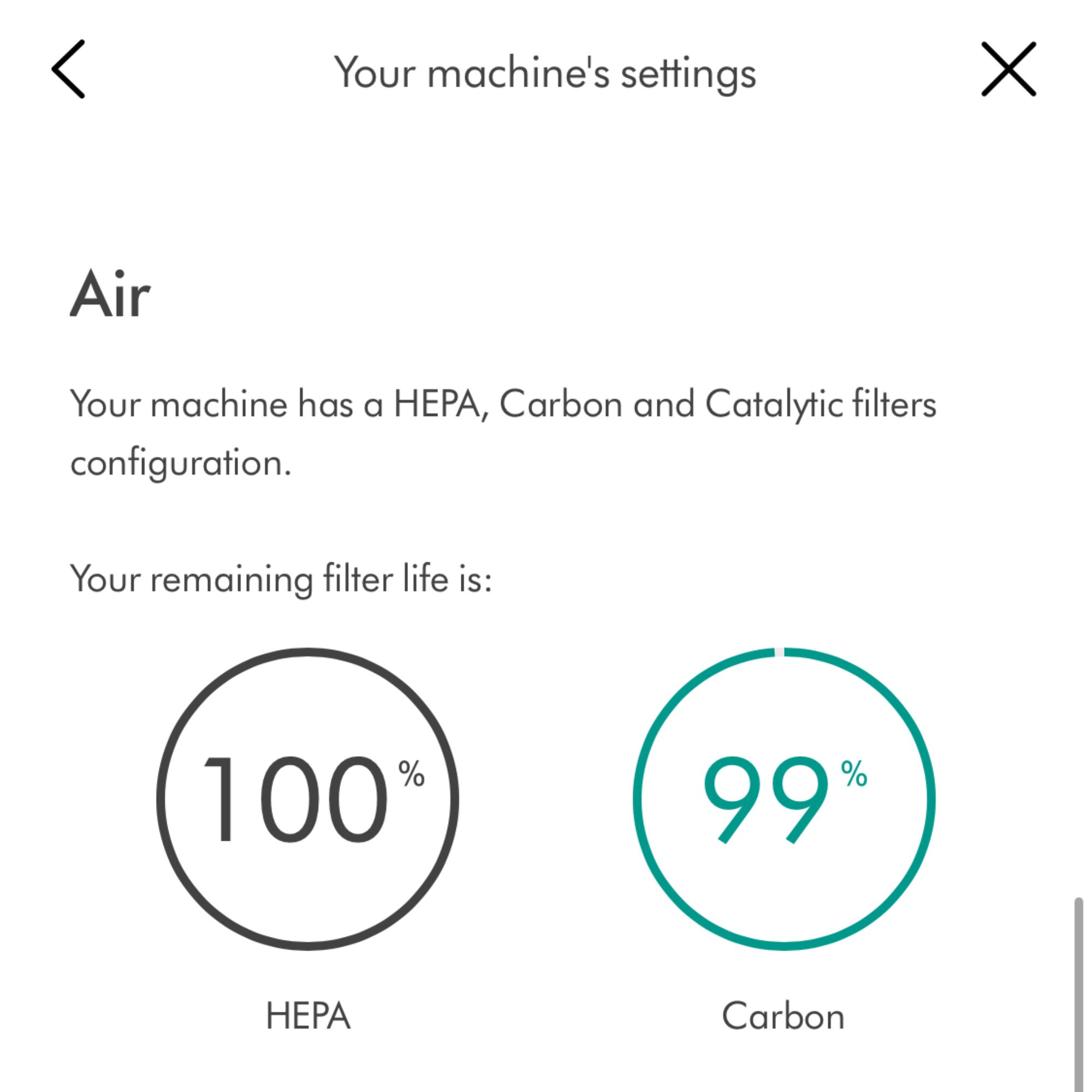
This coincides with Dyson's recommendations, which suggest replacing the HEPA H13-grade filter after using it for up to five years (unless the machine indicates an earlier replacement is necessary) and the K-carbon filter every two years. Thankfully, the Selective Catalytic Oxidisation (SCO) filter is permanent and never needs replacing.
When it comes to replacing these filters, Dyson recommends that you buy straight from the source, and these will set you back £60 each. To be honest, I was expecting that to be worse, so shelling out £60 every two years and another £60 every five years isn’t as bad as other air purifiers out there.
How does it rate online?
There are currently 78 reviews of the Dyson Big + Quiet Formaldehyde on the Dyson website, with an average star rating of 4.6 out of 5. Of course, one of the biggest concerns many of the reviewers had was the size of the appliance, but one customer wrote, ‘The concerns go away pretty quickly as soon as I start using it.’
That’s because customers rave about the air quality information the Big + Quiet provides, finding it far superior to other models on the market. They also love how quiet it is, even on higher fan settings. And, most importantly, they feel as though it has made a significant improvement in the air quality of their home.
Verdict: Should you buy the Dyson Purifier Big+Quiet Formaldehyde?
I won’t lie and say that the Dyson Purifier Big+Quiet Formaldehyde suits everyone, because it won’t. I’m not even sure I’m the perfect customer for this appliance, as my house is a little too compact to make the most of it.
However, I’m writing this review a week after I stopped officially ‘testing’ it - and I’m still using it willingly, because it impressed me that much. So, I think that has to stand for something.
But all in all, I think those who have larger, more open-plan homes or want to invest in their family’s health and air quality would benefit from this air purifier, as the information this Dyson offers at your fingertips is unmatched. The build quality is also incredible, and the app functionalities are wide-ranging and impressive. Of course, the air purifying properties are second to none, as you’d expect from such a high-ticket item.
However, if you live in a smaller house and just want something to take the edge off your hay fever symptoms or your battle a bit of dust, the Big+Quiet will undoubtedly be overkill. In that instance, it’ll suit you better to opt for something cheaper, smaller, and perhaps a bit louder.







